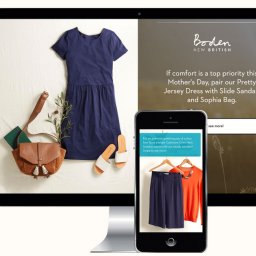
Some more Learnings from Usability Testing in China
In my last post I said I would share some more reminders and learning from the Usability Testing we recently completed in China and so this post focuses a bit more on the eCommerce aspects of the testing. There is a fair bit published about Chinese online behaviour and you can read about that in posts like this. I’ll be looking at more specific issues that brands entering the country should consider.
Qin Zi Zhuang
The first of these is “Qin Zi Zhuang” and that is both a lesson for western retail buyers entering China but also a reminder of the cultural differences we face when entering new markets. “Qin Zi Zhuang” means ‘all wearing same’ and is a popular habit for entire families in China – and to some extent in North America. During the usability testing for a fashion brand it was a theme raised by multiple participants. They wanted to know where the family collections were and were somewhat surprised they weren’t present on the website.
Focusing more now on eCommerce usability in China there were a few reminders of other differences between East and West. China barely uses a postcode or zip code now and consider it old fashioned. This is in direct contrast to many western countries that rely on this information to find the customers address. Equally few Chinese will understand the address format fields taken directly from Western websites. Although delivery address us understood, billing address isn’t, nor is the fields used in western websites to capture the different lines of an address. Chinese users are frequently observed in usability testing inputting their entire address into line 1 of a western website address form.
For UK and US website owners entering China a further issue, if you are presenting your website in English, is the address input language. Many Chinese, particularly middle class Chinese consumers, will have sufficient command of English or confidence using international websites to be able to place an order. However, few postal workers speak English and so addresses presented in English (Pinyin) rather than in Mandarin can cause delivery problems and higher customer service queries. At the very least, allowing address input in Chinese as well as Pinyin will increase delivery success.
If you are looking to carry out any international usability testing in China or any other external market and would like some help or services support please contact us today on +44(0)800 0246 247, or email hello@ux247.com. We have a wealth of experience in running international usability testing research in single or multiple countries and would love to help you.

















